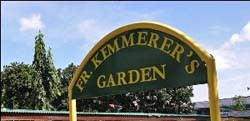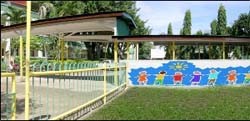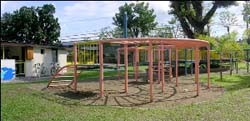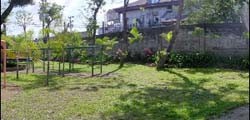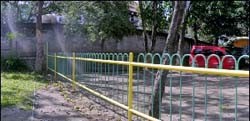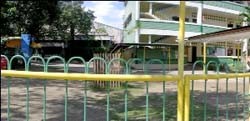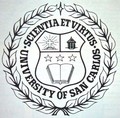USC-BHS Facts
USC Boys High School
The USC Boys High School traces its history from the free primary school opened in 1595 in the Parian by Spanish Jesuit missionaries, Father Antonio Sedeño, Father Pedro Chirino, and Father Antonio Pereira. After sufficient endowment, the school was named the Colegio de San Ildefonso in 1606. The colegio was moved to the wooden buildings in Martires Street in 1725 and it was housed there until 1769 when the Jesuits were expelled from the Philippines. It was re-opened by Bishop Mateo Joaquin de Arevalo with secular priests in charge in 1783. The same building was used but the name was changed to Real Seminario de San Carlos. From a primary school to grammar school, the colegio now became a school for those who wanted to join the religious life. The Dominican Fathers took over the school management from the Diocese in 1852. Then the Vincentians came to the Seminario-Colegio de San Carlos in 1867. Externos or students who lived outside and had no intention to become priests were accepted. In 1891 college-level courses were offered and in 1908 authority to confer bachelor’s degree was granted. Then in 1924, the Vincentian fathers segregated students for priesthood from the high school and college students. By virtue of a papal decree the seminary became a separate entity. Both groups continued to use the Martires school site. In 1927, only the high school department remained together with the Seminary.
In 1935, the administration of the school was turned over to the Society of the Divine Word (SVD – Societas Verbi Divini). Although college courses were opened in 1934 and women admitted in 1940, the high school department remained exclusively for boys. On December 8, 1941, classes were interrupted by World War II until August 1, 1945 when classes on both levels were reopened. The enrollment of the high school department swelled in 1947-1948. A new high school building was constructed at the corner of P. del Rosario and Pelaez streets for the growing population. At this time, the high school organized evening classes which were co-eduational. However, with the expansion of the new University of San Carlos, the Boys High school was moved to its present site at General Maxilom Avenue in 1955. The night school was phased out in 1957.
The Elementary Department of the Boys School was established to accommodate male pupils from the Colegio de la Inmaculada Concepcion and St. Theresa’s College which had to phase out their intermediate classes for boys. The elementary department started with Grades V and VI during the school year 1959-1960. In school year 1966-1967, Grade IV pupils were admitted. One grade level after another was added in the following years thereon, until school year 1969-1970 when Grade I pupils were accepted. Complete elementary education was finally offered by the Boys School. In school year 1980-1981, the school opened classes for Kindergarten.
Both the Boys High School and the Boys Grade School are accredited schools. The Philippine Accrediting Association of Schools, Colleges and Universities granted accredited status to Boys High School in 1985 and to Boys Grade School in 1988.
In 2005, the Boys Grade School became co-educational. It accepts girls in Kindergarten 1 and 2, and in Grade 1 to Grade 5. While the Boys High School remains exclusive for boys. With this new development, the school is renamed the University of San Carlos, Basic Education Department, North Campus.
OBJECTIVES
High School Department aims to:
• provide a Christian community environment wherein students experience and witness genuine faith and the actualization of Christian love.
• a school where students acquire the basic knowledge and skills of learning to prepare them for college education and for possible employment and other ventures;
• a school where students become imbued with a true sense of justice and service to others;
• and a place where students can grow and develop their physical well – being.
• guide the students to attain human maturity by providing avenues to their quest for self-knowledge, the unfolding of personal qualities and the formation of conviction to make responsible decisions.
• assist the students in expressing their love of God and neighbor within the context of community living; at the same time, to engender in them the feeling of universal brotherhood among the peoples.
The USC-North Campus, graduate, therefore, shall be able to:
1) manifest the true Christian spirit by living out the Gospel values as shown by the following:
1.1 possession of knowledge and appreciation of the fundamental teaching and practices of the Catholic Church.
1.2 familiarity with the word of God in the person of Jesus Christ as revealed in the Gospel.
1.3 valuing of the sacraments as the source of spiritual strength to sustain his faith and fidelity to Christ.
1.4 acquisition of right attitudes and moral values that enable him to form a conscience to resolve moral issues with charity.
1.5 awareness of the human tendency to selfishness which can be the cause of injustice to oneself and others.
1.6 acquisition of the habit of self– discipline as motivated by a sense of justice and charity.
1.7 perception of conflicting values of society especially between the consumer ideology and Gospel ideals.
1.8 awareness of different values and componentsforming his own value system.
2) use the basic knowledge and skills acquired by:
2.1 understanding the basic concepts in the human discipline such as the Social Sciences, Art and Music.
2.2 communicating effectively in writing and speaking, engaging in wholesome listening and reading activities and expressing himself creatively through the arts.
2.3 applying scientific and computation skills in problem–solving situations.
2.4 making decisions by engaging in analysis and synthesis and following through such decisions.
2.5 working cooperatively and independently as the situation may require.
2.6 analyzing social problems and issues and their effects on human communities and ecology as well as involving himself in resolving them.
2.7 recognizing the impact of scientific and technological advancement on the intellectual, social and moral life.
3. acquire wholesome and desirable attitudes by:
3.1 showing the Christian attitude of respect for others, their needs, feelings and ideas.
3.2 learning to value Filipino tradition of love and respect for elders and mutual support.
3.3 becoming responsible and/or assuming responsibility for his judgments and actions.
3.4 being adaptive and flexible to changing conditions without compromising Christian principles.
3.5 being more conscious of the dignity of others, recognizing their rights, without consideration of status, religion, nationality or beliefs.
3.6 exhibiting an aversion toward whatever form of dishonest and unjust practices.
4. demonstrate a sharpened awareness of the social problems and the needs of his community and country in order to function competently as a concerned and responsible member of the community by:
4.1 showing the willingness to share his time, talent, and material resources according to his capacity for the service of others.
4.2 learning to be sensitive and emphatic to the poor and less privileged segments of the community through his active participation of socially oriented projects.
4.3 appreciating the problems of community development and contributing to the effort of building a better community.
.jpg)
THE UNIVERSITY SEAL
SYMBOLS
Main field: The open book stands for the educational work of the University. The three stars are symbols taken from the Philippine flag, signifying the three geographical divisions of the Philippines. They are taken into the main field to connote the idea that the University’s work is directed to the educational, cultural, social, economic, and religious growth of the country.
Shield head: The ‘right’ half carries the symbol of the Divine Word. The ‘left’ half depicts the main symbol of the Official Seal of the City of Cebu, the chapel over Magellan’s cross.
COLORS
Main field:
Background: Green – The third heraldic color, signifies freedom, beauty, joy, friendship, health and hope.
Book and stars: Gold – The first heraldic metal signifies excellence, intellect, fame, virtue and nobility.
Shield head:
“Right” half
Background: Red – The first heraldic color signifies courage, strength, triumph, dominion and justice.
Golden Cross – Christian virtue and nobility.
“Left” half
Background: Blue – The second heraldic color signifies loyalty, stability and humility.
Chapel: Silver – The second heraldic metal signifies purity, wisdom, innocence and joy.
MOTTO:
“Scientia et Virtus” – The motto verbalizes the aspiration to carry out the ideals expressed by the symbols and colors of the seal.
PHILOSOPHY, NATURE AND OBJECTIVES
The University of San Carlos Boys’ High School believes that true education consists in the full development of the human person (Physical, social, intellectual, aesthetic, emotional and spiritual) in pursuit of his ultimate goal and the good of the societies of which he is a member, and in whose obligations as an adult he will share. (Vat. II Declaration on Christian Education).
Boys’ High School is Filipino in its ideals and aspirations. It believes, in molding the student in his entirety in seeking the actualization of his potentials while preparing him for a life of active involvement in his community under the new society. Hence, in the realization of all these for the student, the USC Boys’ High School is guided by a nationalism that prepares the learner to be not only a citizen of his country but also of the world – the community of men.
As a Catholic high school for Boys, the Boys’ High School takes Christ as the model of its students, faculty, administrators and alumni. Religion is at the heart of its instruction and is taught in all levels. There is a chaplain who sees to the individual as well as collective spiritual growth of the BHS community. It aims to get its students involved in activities that confirm more and more Christ’s humanity and presence in other men through functions like Alay-Kapwa projects where love of neighbor is done not just said… shared not just given. Involvement is shown in many a community project aimed at sharing with the least of our brothers… the aged, the blind, the lepers, the homeless.
The USC Boys’ High School strives to prepare the learner to:
(a) continue general education started in the elementary grades
(b) continue pursuing a career in college
(c) or take up vocational competence in preparation for gainful employment.
In the light of these general objectives, BHS aims to enable its students:
1. To contribute his share towards national development by cherishing, preserving and developing Christian moral, social and spiritual values and other desirable aspects of our national heritage.
2. To understand the wide possibilities of the arts and the sciences as permanent sources of pleasures and profit, and discover, broaden and heighten his abilities in and appreciation for them.
3. To acquire the basic occupational skills, knowledge and information essential for obtaining initial gainful employment and for making intelligent choice of occupation or career.
4. To acquire further skills in thinking, speaking and writing, and develop the ability to react intelligently and creatively to the mass media and real life situations.
5. To obtain experience and form desirable attitudes for understanding himself, his own people and other races, places and times through opportunities for living vicariously with a wide variety of people thereby promoting a keen sense of self and family and of the family of nations.
6. To demonstrate understanding, acquisition and application of the basic concepts and methodologies of the different branches of human knowledge in order to promote physical, intellectual, emotional and social well-being.
USC-BHS Now
Facade
..jpg)
Quadrangle
..jpg)
..jpg)
..jpg)
..jpg)
Chapel
..jpg)
..jpg)
..jpg)
..jpg)
Auditorium
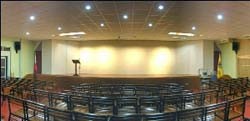

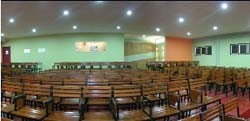
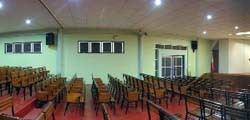
Football Field
..jpg)
..jpg)
..jpg)
..jpg)
..jpg)
..jpg)
Gymnasium
..jpg)
..jpg)
..jpg)
..jpg)
Library
..jpg)
..jpg)
..jpg)
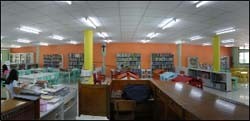
Fr Kemmerer Gardens
